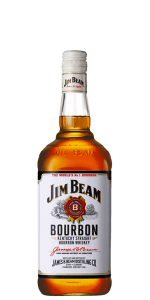Two More Reasons To Love Buffalo Trace
Here at Whisk(e)y Apostle, it is no secret that we love Buffalo Trace. Not only do they make some really excellent whiskies (Buffalo Trace, Eagle Rare, George T. Stagg, and Sazerac Rye to name a few), but they approach whiskey making with an almost religious fervor and a sense of experimentation rarely seen in such a large scale operation. This week, the folks at Buffalo Trace announced two more reasons to get excited. Here’s the press release:
What’s next? After more than twenty years of experimentation, Buffalo Trace Distillery is rolling out the latest release of the prized Experimental Collection. This round of tinkering was conducted to find out how barrels with different wood grains affect bourbon aging. In particular, what impact do barrels made from fast-growth oak trees with coarse grain patterns have on bourbon aging, versus barrels made with slow-growth trees with fine grain?
Here are some answers to that question:
1. FINE GRAIN OAK: These barrels were filled July13, 1994 and bottled May 7, 2009. Buffalo Trace Mash Bill #2 was used and the product entered the barrel at 125 proof. After more than 14 years of aging, the slow-growth of fine grain wood concentrated the sugars and imparted extra doses of caramel and vanilla. The bourbon is rich and exceedingly sweet with an almost syrupy character. It also has a nice balance of flavors and complexity.
2. COARSE GRAIN OAK: The filling and aging time on these barrels is the same as with the fine grain. After nearly 15 years in the barrel, this whiskey is dry with a balance of smokiness and wood with herbal qualities. The finish is quick and woody and it is slightly heavy with a powerful complexity.
“We continue to learn new and interesting information from these experiments. We never know how they are going to turn out,” said Harlen Wheatley, master distiller. “It’s also great to see the excitement that surrounds these releases. The customer feedback is great.”
There are more than 1,500 experimental barrels of whiskey now aging in the warehouses of Buffalo Trace. Each of the barrels has unique characteristics making it different from all others. Some examples of these experiments include unique mash bills, types of wood and barrel toasts. In order to further increase the scope, flexibility and range of the experimental program an entire micro distillery complete with cookers, fermenting tanks and a state of the art micro still has been constructed within the Buffalo Trace Distillery.
The Experimental Collection will be packaged in 375ml bottles. Each label will include all the pertinent information unique to that barrel of whiskey. These whiskies will be released in late May of 2009 and retail for approximately $46.35 each. Each experiment is rare and very limited. For more information on the Experimental Collection or the other products of Buffalo Trace Distillery,



